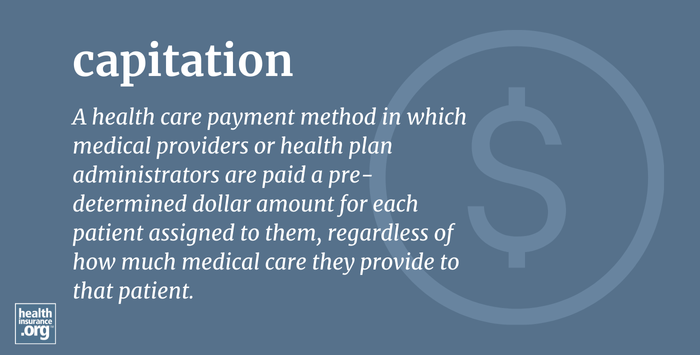
What is capitation?
Capitation describes a health care payment method in which medical providers or health plan administrators are paid a pre-determined dollar amount for each patient assigned to them, regardless of how much medical care they provide to that patient.
Capitation can be used by health plans as a means of paying medical providers.1 It can also be used by the government (states, for Medicaid managed care,2 and the federal government, for Medicare Advantage3) as a means of paying private insurance companies that administer government health coverage programs.
Capitation is an alternative to a fee-for-service approach, in which payment is made for each service provided. In a fee-for-service model, a provider will make more money for a patient who needs extensive care, and less money (or no money) for a patient who needs little or no care. The capitation model transfers the risk and reward opportunities to the provider (or the insurer that administers a government health program). They stand to profit if they're able to provide all necessary care for less than the total capitation payments, but also stand to lose money if they spend more to provide the care than they receive in capitation payments.
Footnotes
- "Capitation, Primary Care" AAFP. Accessed Nov. 1, 2024 ⤶
- "Medicaid managed care payment" MacPac. Mar. 10, 2022 ⤶
- "Growth of Medicare Advantage: What Providers Need to Know" CliftonLarsonAllen. Accessed Nov. 1, 2024 ⤶
